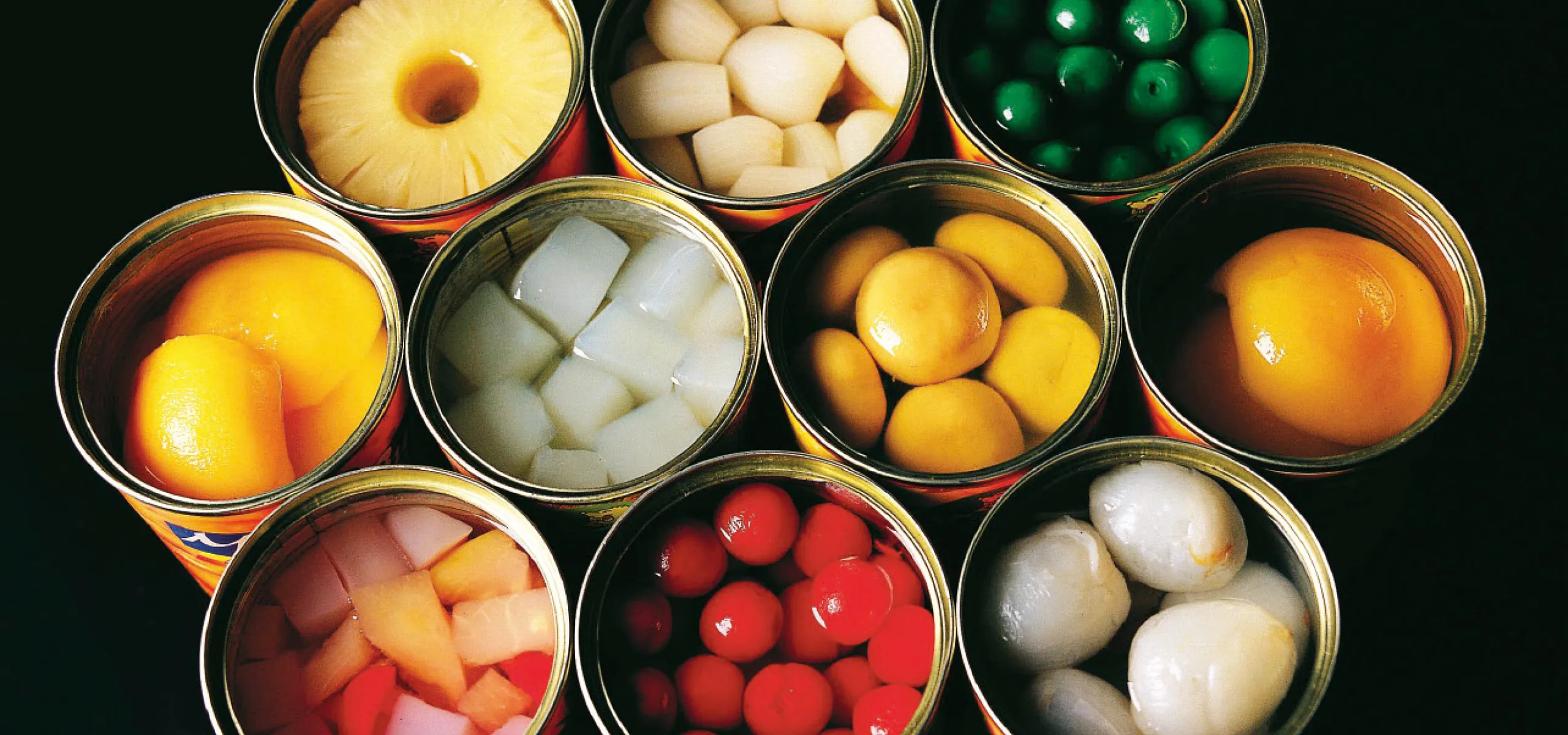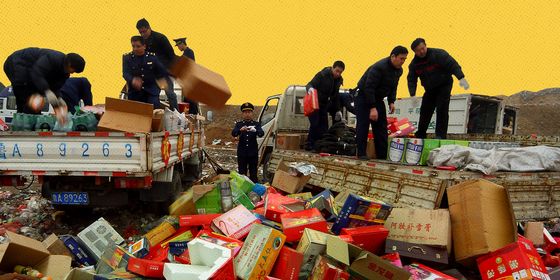From imported luxury to detested health hazard to essential Covid lockdown supply, canned fruits have had a complicated relationship with Chinese consumers
Wang Kai’s grandma pronounced him sick, and the bittersweet wait began. He sat at home twiddling his thumbs, as grandma marched downstairs to the corner shop, eventually returning with a pot-bellied glass jar glowing with golden slices of peaches that swam in syrup inside. Wang would wait a few minutes longer, while she set the jar on the balcony for a proper chilling from Harbin’s icy winter cold, before he could finally gulp down this sweet, refreshing delight.
Wang, now 33 and living in the southern city of Xiamen, Fujian province, says that whenever he got sick as a child, the adults in his Northeastern family treated him with canned yellow peaches. “After eating the peach, I would feel better after just a few moments,” he recalls on the phone with TWOC.
Many who grew up in Dongbei, China’s Northeast, during the 1980s and ’90s share Wang’s nostalgia for canned fruits. Some netizens even swear by the foodstuff to alleviate anything from nosebleeds to menstrual cramps to the side effects of Covid-19 vaccines, crowning the syrupy treat “Dongbei penicillin.”
Some say this uncanny property is pure placebo effect, while others say the tart and sweet taste helps improve the appetite, leading to the impression that one has recovered from illness. Wang’s grandma used to offer him a different explanation: It’s because the character 桃 (táo, peaches) sounds the same as 逃 (to escape), so that “the sickness would run away.”
In 1809, 180 years before Wang was born, Frenchman Nicolas Appert won 12,000 francs from the government for his invention of the process that slows down food decay by heating it inside a sealed glass jar.
The first Chinese canned foods factory was established in Guangzhou, Guangdong province, in 1893, but the 1950s saw around 50 factories mushroom in major cities across China, mostly manufacturing for military needs or export to other socialist countries, according to Chinese newspaper Economic Daily. In 1995, during Wang’s childhood, the number of factories nationwide had risen to 1,775.
Throughout those decades, canned fruits remained a luxury for the sick or special occasions. News reports and blog posts state that in the ’70s, a jar of canned fruit cost around the price of half a kilogram of pork. And in the ’90s, “where I’m from…there weren’t many fresh fruits in winter,” Wang recalls. Canned peaches became a close substitute, earning it a perennial place on Chinese New Year dinner tables around Dongbei.
But in recent years, even as Chinese consumers become more willing to splurge on food, health concerns and more enticing options have pushed canned fruits off the pedestal.
“When I was sick, [the adults] gave me slices of fresh apples, but never canned peaches,” Xi Xi, who grew up in the late ’90s and early 2000s in the southern city of Shenzhen, with Dongbei lineage from her mother’s side, tells TWOC. “They thought it was too sweet, and therefore unhealthy.”
For Xi, a second generation Dongbei emigrant, canned fruits typically referred to those imported via Hong Kong: fruit cocktails of artificially pink maraschino cherries, pineapples in a seductively bright yellow, and white chewy fruit bits that she could not identify. All the vibrant colors from the tropics swirled together in the sugary liquid of Xi’s memory into one impression: “Fancy,” she says.
Unlike Dongbei, the warm, burgeoning southern port of Shenzhen in the ’90s saw no lack of fresh fruits in winter months. To Xi, decadent snacks that came in lush dark green tin cans decorated with foreign letters tasted better than the fresh alternatives. “Sweet things must be good; and what your parents didn’t want you to eat must be good…it felt more mysterious and noble,” she recalls.
Toward the end of her elementary school years, however, these forbidden fruits fell further from glory in the Xi household. “At some point, they all started saying, ‘Don’t eat canned foods. They’re made from rotten fruits,’” Xi recalls.
That was the mid- to late-2000s, when a plethora of food safety issues shook Chinese consumers’ confidence. In 2006, the carcinogenic chemical dye Sudan Red was found in eggs; in 2008, close to 300,000 infants were diagnosed with kidney diseases after melamine was detected in milk powders from major dairy brands; and in 2010, many restaurants were found to be using illegal “gutter oil,” potentially toxic oil recycled from food waste or literally taken from gutters.
Meanwhile, starting in 2003, an article called the “World Health Organization’s List of 10 Junk Foods” went viral in China, even getting reposted by state media organizations such as China Daily. On the list were fried foods, carbonated drinks, and anything canned.
Canny Treat is a story from our issue, “Promised Land.” To read the entire issue, become a subscriber and receive the full magazine.













